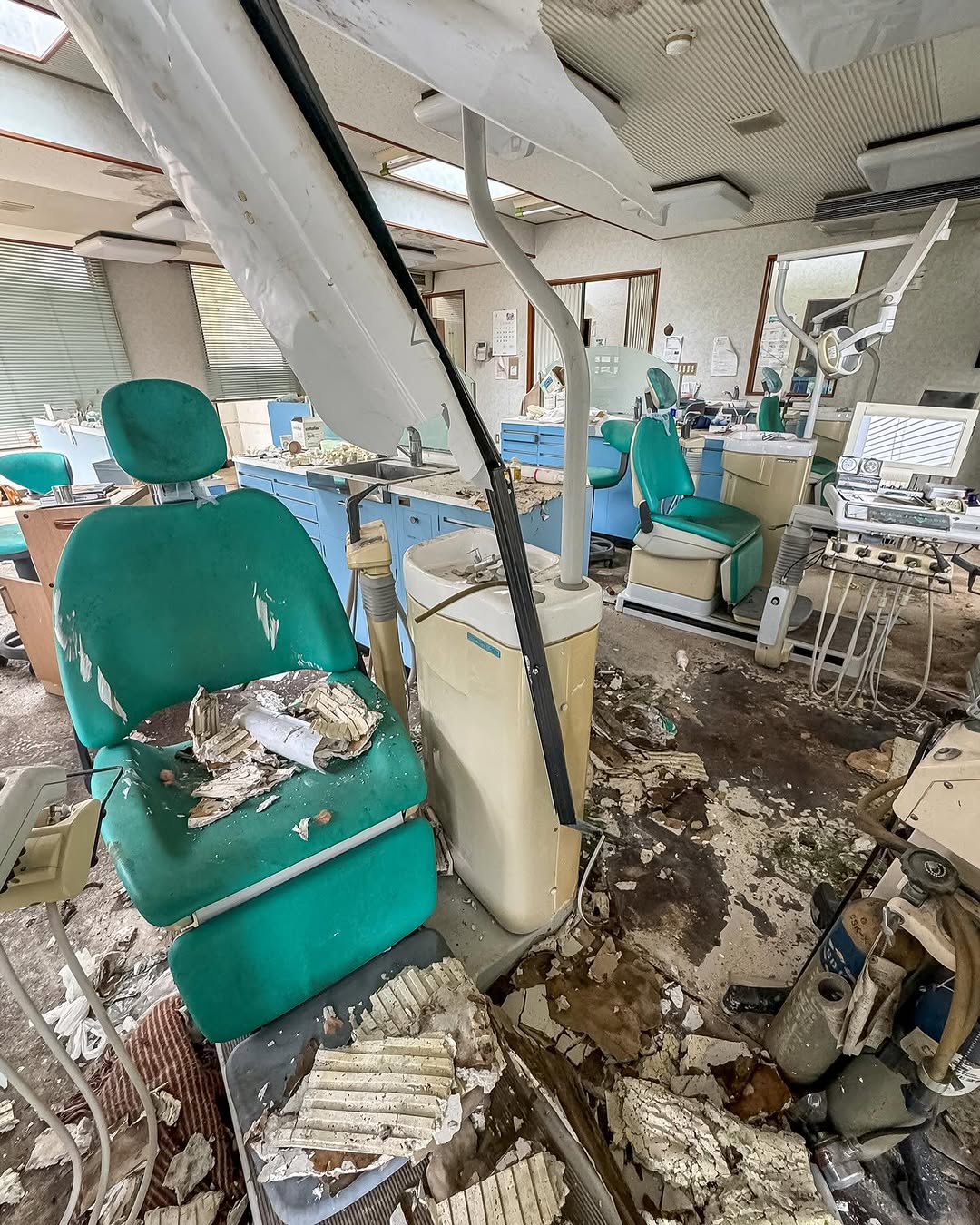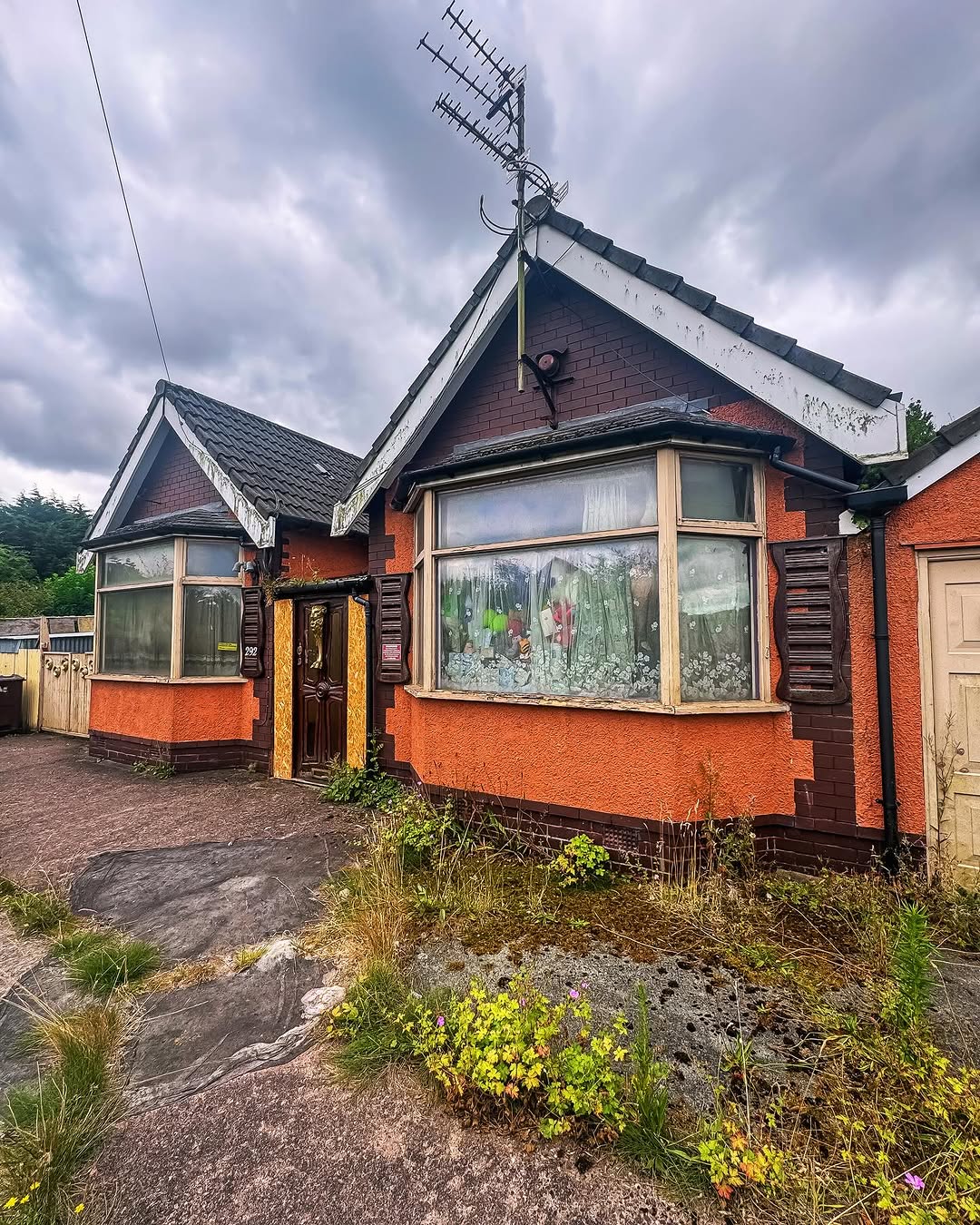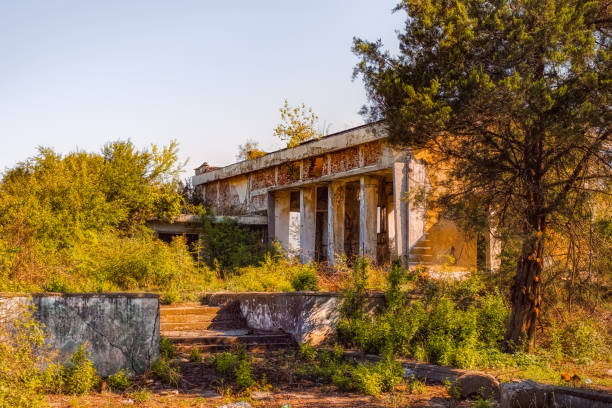The thrill of discovering an abandoned dental office frozen in time since March 2011 represents one of the most exciting finds in urban exploration. This remarkable dental practice, left completely untouched with all equipment, tools, patient records, extracted teeth, X-rays, and even a Mercedes vehicle abandoned on the property, offers an extraordinary glimpse into modern dental practice and the sudden nature of business closures. The discovery of such a perfectly preserved dental facility creates a unique time capsule that documents both the day-to-day operations of a dental practice and the abrupt end that left everything exactly as it was over a decade ago.
The excitement of stumbling upon this abandoned dental office was so overwhelming that it demanded immediate exploration. The sight of a fully equipped dental practice, complete with treatment rooms, patient records, and professional equipment, represents every urban explorer’s dream discovery. The fact that even the dentist’s Mercedes remained abandoned on the property adds another layer of mystery to this fascinating find, suggesting the sudden and unexpected nature of the practice’s closure.
The Phenomenon of Abandoned Dental Practices in America
Economic Factors Leading to Dental Office Closures
The abandonment of dental practices across America has become increasingly common due to various economic pressures affecting healthcare providers. Rising operational costs, insurance reimbursement challenges, student loan debt, and changing patient demographics have contributed to the closure of numerous dental offices nationwide. The economic recession of 2008-2011 particularly impacted small dental practices, with many practitioners unable to maintain their operations during difficult financial times.
Independent dental practices face unique challenges in today’s healthcare landscape, including competition from corporate dental chains, rising equipment costs, and the financial burden of maintaining modern dental technology. These pressures can lead to sudden closures, often leaving behind fully equipped offices that represent significant investments in dental equipment and infrastructure.
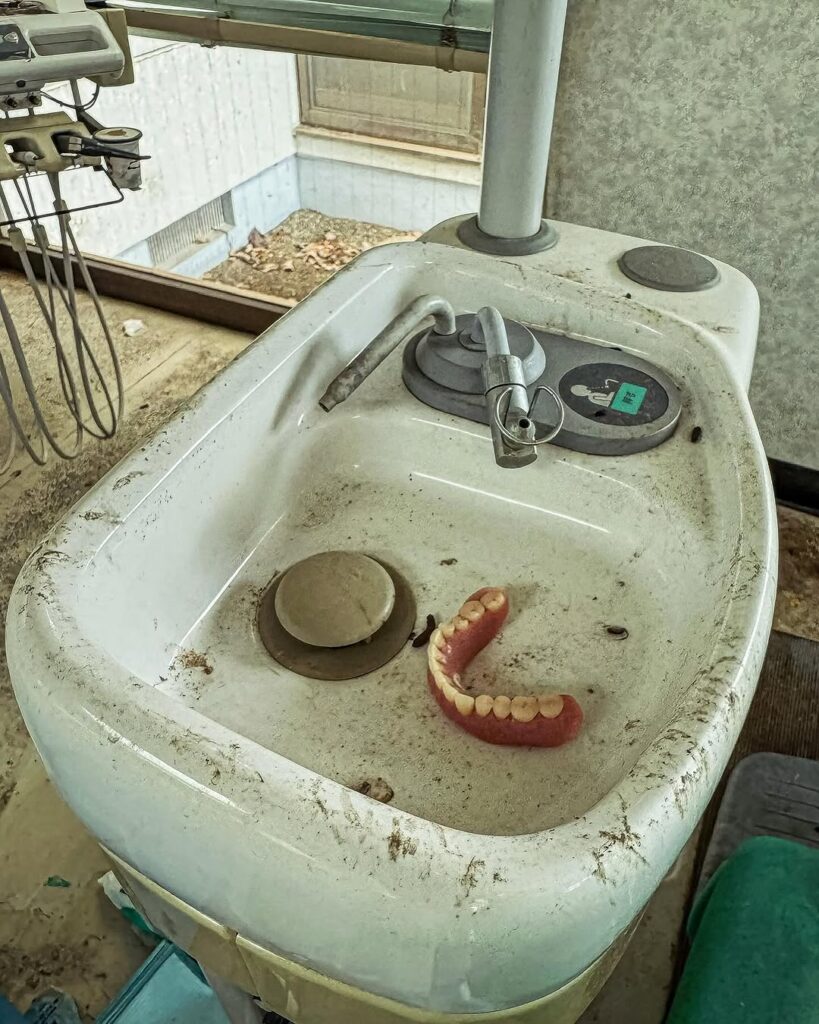


The Timeline of Dental Practice Abandonment
The March 2011 closure date of this abandoned dental office coincides with the aftermath of the Great Recession, when many small businesses and healthcare practices faced severe financial difficulties. This timing suggests that economic pressures may have contributed to the sudden closure, forcing the practice to cease operations without the time or resources to properly liquidate equipment and assets.
The preservation of everything from dental equipment to patient records and even the dentist’s personal vehicle indicates an abrupt closure that prevented normal business wind-down procedures. Such sudden abandonments are often the result of financial crises, health emergencies, or other unexpected circumstances that force immediate cessation of operations.
Dental Equipment and Technology Left Behind
State-of-the-Art Dental Chairs and Treatment Units
The abandoned dental office likely contains multiple dental chairs and treatment units that represent significant investments in dental technology. Modern dental chairs from the 2010-2011 era featured advanced hydraulic systems, integrated lighting, and computer-controlled positioning that provided optimal patient comfort and practitioner ergonomics. These sophisticated treatment units typically cost tens of thousands of dollars each and represent the cornerstone equipment of any dental practice.
The preservation of dental chairs in their original positions creates a haunting tableau of interrupted dental care, with treatment rooms appearing ready to receive patients despite years of abandonment. These chairs often feature attached delivery systems for dental instruments, suction devices, and water irrigation systems that demonstrate the complexity and sophistication of modern dental equipment.
Digital X-Ray Systems and Imaging Equipment
The X-rays left behind in this abandoned dental office provide fascinating insights into the patients who were treated at this practice and the diagnostic capabilities available in 2011. Digital X-ray systems were becoming standard in dental practices during this period, representing significant technological advances in dental imaging and diagnostic capabilities.
The preservation of X-ray films and digital imaging equipment offers a unique opportunity to examine dental diagnostic practices from over a decade ago. These images document various dental conditions, treatments, and diagnostic procedures that provide insights into the scope of services offered by this practice and the dental health challenges faced by patients in the community.
Dental Instruments and Specialized Tools
The variety of dental instruments and tools left behind in this abandoned office represents a comprehensive collection of equipment necessary for modern dental practice. From basic examination instruments like mirrors and probes to sophisticated surgical tools and endodontic equipment, these abandoned instruments tell the story of comprehensive dental care provided at this facility.
Specialized dental tools found in abandoned practices often include periodontal instruments, restorative equipment, and surgical devices that demonstrate the range of services offered. The preservation of these instruments in their original storage locations provides insights into practice organization, instrument sterilization procedures, and the daily workflows of dental professionals.
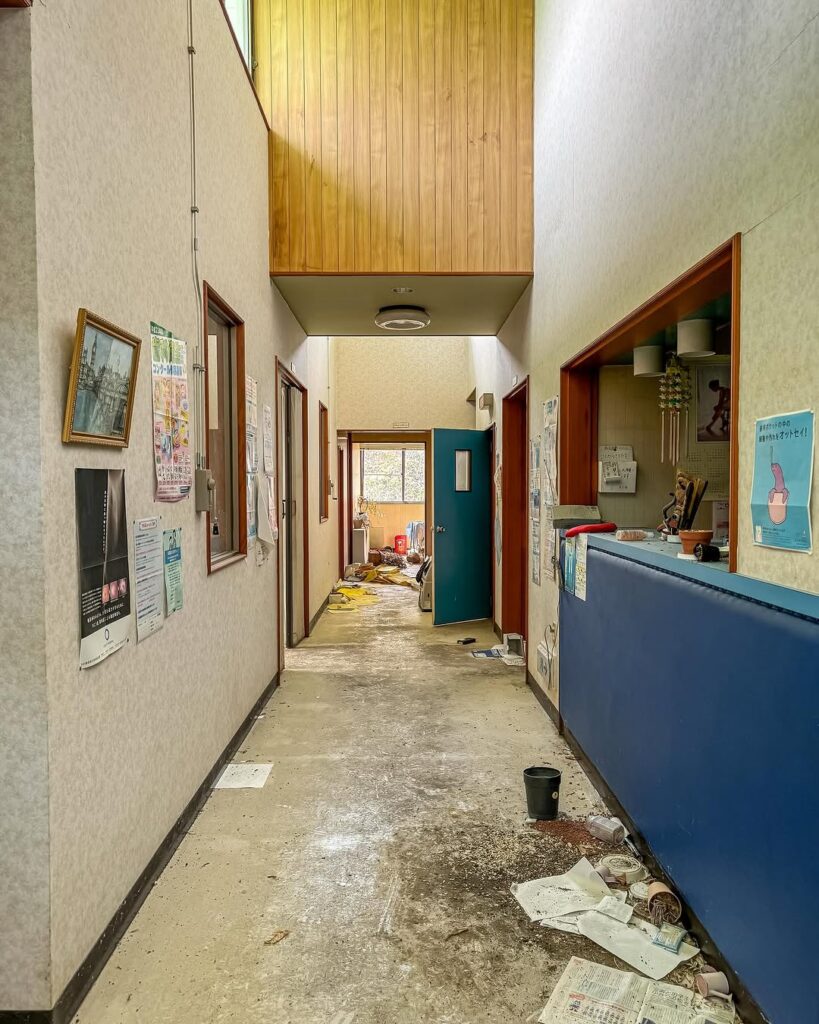

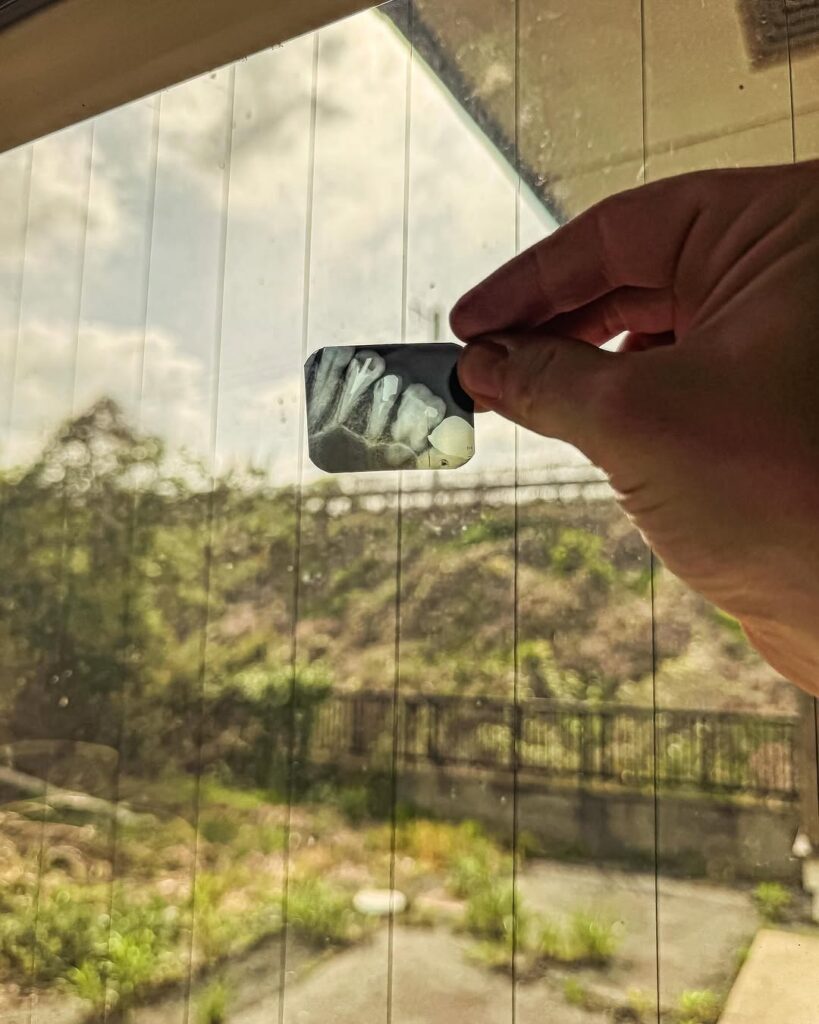
Patient Records and Dental Documentation
Comprehensive Patient Files and Treatment Records
The patient records left behind in this abandoned dental office represent years of dental care documentation and provide fascinating insights into dental practice management and patient care protocols. These records likely include treatment plans, progress notes, insurance information, and comprehensive dental histories that document the relationships between the practice and its patients.
Dental records from 2011 and earlier showcase the transition period between paper-based and digital record-keeping systems in dental practices. These documents demonstrate how dental professionals documented patient care, tracked treatment progress, and maintained the detailed records necessary for quality dental care and insurance reimbursement.
Privacy Concerns and Historical Value of Dental Records
The presence of patient records in abandoned dental offices raises significant privacy concerns while also providing valuable historical documentation of dental practice and community health patterns. These records contain sensitive personal and medical information that requires careful handling and consideration of patient privacy rights, even in abandoned facilities.
The historical value of dental records from abandoned practices lies in their documentation of dental disease patterns, treatment approaches, and practice management systems from specific time periods. These records can provide valuable insights for dental researchers, public health officials, and historians studying the evolution of dental care and community health trends.
Extracted Teeth and Dental Specimens
Collection of Extracted Teeth for Educational Purposes
Many dental practices maintain collections of extracted teeth for educational, training, and reference purposes. The teeth left behind in this abandoned dental office likely represent specimens collected over years of dental practice, providing examples of various dental conditions, pathologies, and treatment outcomes that were used for educational purposes or case documentation.
Extracted teeth collections in dental offices serve multiple purposes, including patient education, professional training, and documentation of interesting or unusual cases. These specimens often represent examples of severe dental disease, successful endodontic treatments, or unusual anatomical variations that provide valuable learning opportunities for dental professionals and students.
Dental Pathology and Disease Documentation
The preserved dental specimens in this abandoned office offer unique insights into the dental health challenges faced by the community served by this practice. These teeth likely represent various stages of dental disease, treatment outcomes, and pathological conditions that provide valuable documentation of dental health patterns in the local population.
The preservation of extracted teeth and dental specimens creates an inadvertent archive of dental pathology that could provide valuable information for dental researchers studying disease patterns, treatment effectiveness, and the evolution of dental health in American communities.
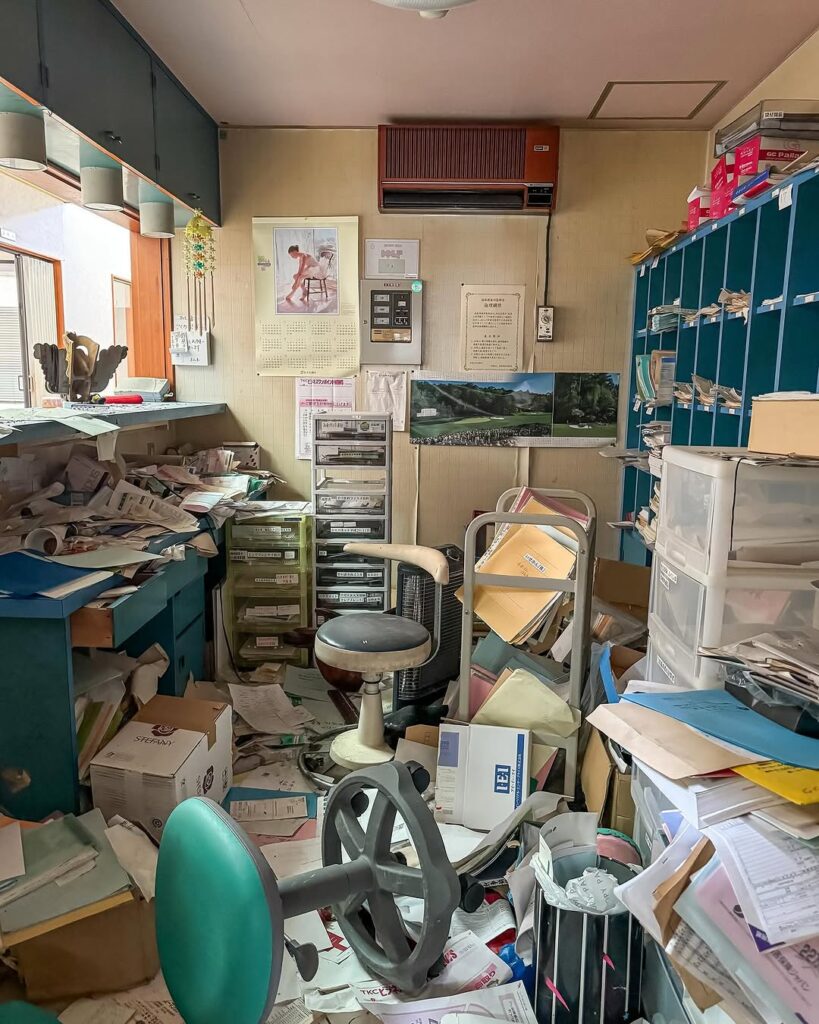
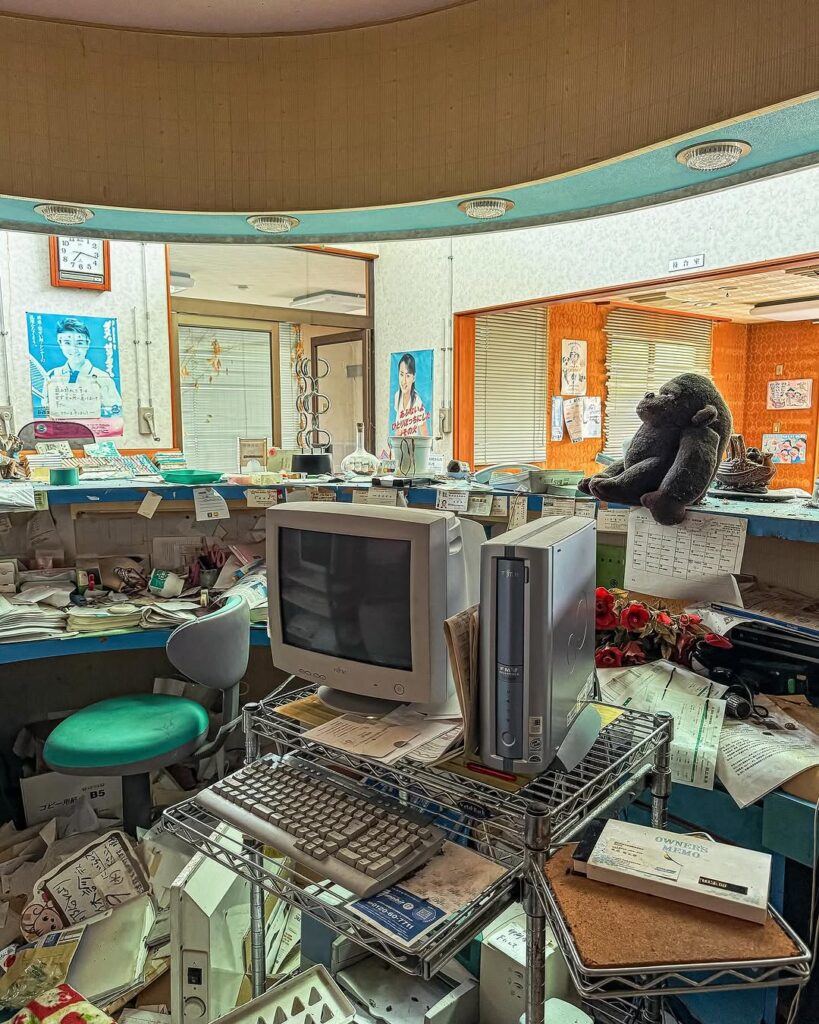

The Mysterious Abandoned Mercedes
Luxury Vehicle as Status Symbol in Dental Practice
The Mercedes vehicle left behind at this abandoned dental office represents more than just transportation—it symbolizes the professional status and financial success traditionally associated with dental practice ownership. Luxury vehicles have long been status symbols for healthcare professionals, and the abandonment of such a valuable asset suggests the severe nature of whatever circumstances led to the practice closure.
The presence of an abandoned Mercedes adds intrigue to the discovery and raises questions about the sudden nature of the practice closure. The fact that such a valuable asset was left behind suggests that the circumstances surrounding the abandonment were severe enough to prevent the normal process of asset liquidation and business closure.
Asset Abandonment and Financial Distress Indicators
The abandonment of valuable assets like a Mercedes vehicle often indicates severe financial distress or other emergency circumstances that prevented normal business closure procedures. This level of asset abandonment suggests that the practice owner faced circumstances that made it impossible to properly wind down operations and liquidate valuable business and personal assets.
The combination of abandoned dental equipment, patient records, and a luxury vehicle creates a complete picture of a practice that ceased operations suddenly and without the opportunity for proper closure. This type of abandonment is relatively rare and typically indicates significant personal or financial crises that forced immediate cessation of operations.
Urban Exploration and Discovery Process
The Thrill of Abandoned Dental Office Discovery
The excitement of discovering an abandoned dental office stems from the unique combination of professional equipment, personal artifacts, and the intimate nature of dental practice environments. Dental offices contain sophisticated technology, valuable equipment, and detailed records that create fascinating exploration opportunities for urban explorers interested in healthcare facilities and professional environments.
The immediate impulse to explore upon discovering this abandoned dental office reflects the compelling nature of such finds. The preservation of everything from treatment rooms to administrative areas creates a comprehensive time capsule that documents the daily operations of a dental practice and the sudden interruption that left everything frozen in time.
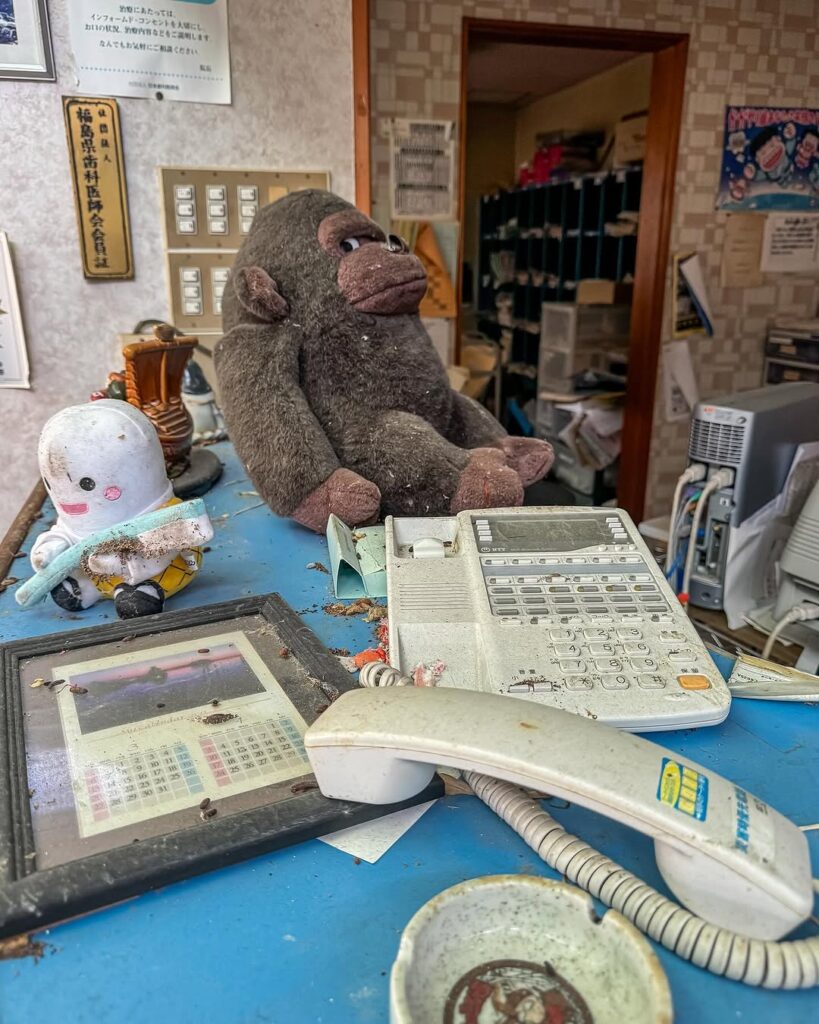

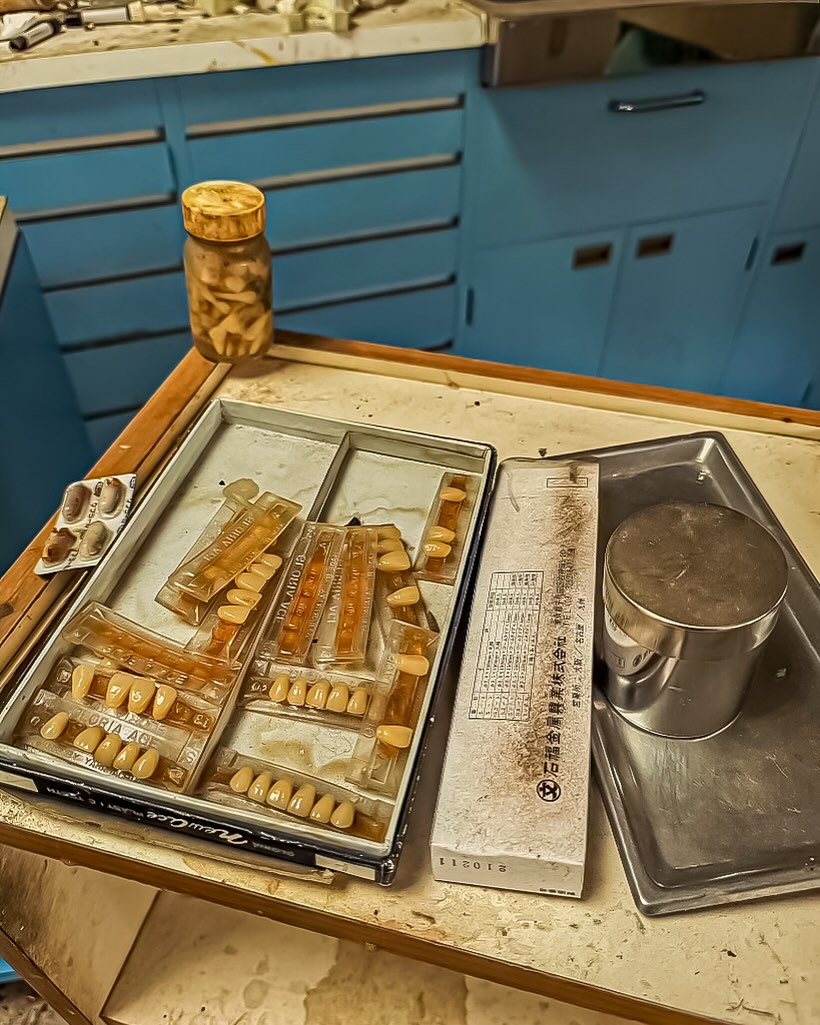
Documentation and Photography of Abandoned Dental Facilities
The documentation of abandoned dental offices requires careful attention to both the technical aspects of dental equipment and the human elements of patient care environments. Professional photography of these facilities can capture the technological sophistication of modern dental practice while also conveying the personal nature of dental care relationships.
Effective documentation of abandoned dental offices includes detailed photography of treatment rooms, equipment configurations, and the various elements that make these facilities unique. The goal is to preserve a visual record of dental practice environments and the circumstances surrounding their abandonment for historical and educational purposes.
Safety Considerations in Abandoned Dental Offices
Health Hazards and Contamination Risks
Abandoned dental offices present unique safety challenges due to the potential presence of biological hazards, chemical contamination, and medical waste. Dental practices use various chemicals, disinfectants, and materials that can pose health risks if not properly contained or disposed of during facility closure.
The exploration of abandoned dental facilities requires appropriate personal protective equipment and awareness of potential hazards including mercury contamination from amalgam materials, chemical residues from dental materials, and biological contamination from patient treatment areas. Professional urban explorers understand these risks and take appropriate precautions to ensure safe exploration.
Structural and Environmental Safety Issues
Like all abandoned buildings, dental offices can develop structural problems, water damage, and environmental hazards over time. The sophisticated electrical and plumbing systems in dental offices can create additional safety concerns if these systems have been damaged or compromised during the abandonment period.
Environmental factors such as mold growth, water infiltration, and pest infestation can affect abandoned dental offices and create health risks for explorers. Proper assessment of structural integrity and environmental conditions is essential for safe exploration of these fascinating but potentially hazardous abandoned facilities.
Legal and Ethical Considerations
Property Rights and Trespassing Laws
The exploration of abandoned dental offices must be conducted within legal boundaries and with respect for property rights. Even abandoned properties typically have owners who retain legal rights to their facilities and contents, making unauthorized entry a potential trespassing violation.
Responsible urban exploration of abandoned dental offices requires research into property ownership, obtaining appropriate permissions when possible, and compliance with local laws regarding abandoned property access. Legal exploration often involves working with property owners, legal representatives, or local authorities to ensure compliance with applicable laws.
Patient Privacy and Confidentiality Requirements
The presence of patient records and medical information in abandoned dental offices creates complex privacy obligations that extend beyond the closure of the practice. Healthcare privacy laws typically continue to apply to patient records even after practice closure, requiring careful handling of any medical information encountered during exploration.
Ethical exploration of abandoned dental offices requires respect for patient privacy and confidentiality, even when practices have been closed for extended periods. This often means limiting documentation of patient-specific information and ensuring that any photographs or descriptions do not compromise patient privacy or confidentiality.
The Business of Dental Practice and Abandonment Patterns
Financial Pressures in Modern Dental Practice
The abandonment of dental practices often reflects broader challenges facing independent healthcare providers in the modern American healthcare system. Rising costs for equipment, supplies, and facility maintenance, combined with insurance reimbursement challenges, create significant financial pressures for dental practice owners.
Student loan debt among dental professionals has reached crisis levels, with many new dentists carrying debt loads exceeding $300,000 upon graduation. These financial pressures can make it difficult to establish and maintain successful dental practices, particularly in economically challenged communities or during economic downturns.
Practice Transition and Succession Planning
The sudden abandonment of dental practices often indicates inadequate succession planning or practice transition strategies. Many dental practice owners fail to develop comprehensive plans for practice sale, closure, or transition, leaving them vulnerable to sudden closure when unexpected circumstances arise.
Proper practice transition planning includes strategies for equipment liquidation, patient record transfer, and asset disposition that can prevent the type of sudden abandonment seen in this discovered dental office. The lack of such planning often results in valuable assets being left behind and patient care being disrupted.
Technology Evolution in Dental Practice
Dental Technology from the 2011 Era
The equipment and technology preserved in this abandoned dental office provides a snapshot of dental practice capabilities from 2011, representing a period of significant technological advancement in dental care. Digital X-ray systems, computer-aided practice management, and advanced dental materials were becoming standard during this period.
The preservation of 2011-era dental technology allows for comparison with current dental practice standards and demonstrates the rapid pace of technological change in dental care. Equipment that was considered state-of-the-art in 2011 may now appear outdated compared to current dental technology standards.
Evolution of Dental Practice Management Systems
The administrative areas of this abandoned dental office likely contain examples of practice management systems, appointment scheduling software, and patient communication technologies that were current in 2011. These systems provide insights into how dental practices managed patient relationships and business operations during this period.
The evolution of dental practice management technology has accelerated significantly since 2011, with cloud-based systems, mobile applications, and integrated communication platforms becoming standard in modern dental practices. The preserved systems in this abandoned office provide a historical perspective on this technological evolution.
Community Impact of Dental Practice Closure
Access to Dental Care in Affected Communities
The closure of dental practices can have significant impacts on community access to dental care, particularly in underserved areas where dental providers are already limited. The sudden closure of a practice can leave patients without established dental care relationships and create barriers to ongoing treatment.
Communities affected by dental practice closures often struggle to find replacement providers, leading to delayed treatment and potentially more serious dental health problems. The abandonment of fully equipped dental facilities represents a loss of healthcare infrastructure that can be difficult and expensive to replace.
Economic Impact on Local Communities
Dental practices typically serve as important economic anchors in their communities, providing employment for dental hygienists, assistants, and administrative staff while also supporting local suppliers and service providers. The sudden closure of a dental practice can have ripple effects throughout the local economy.
The abandonment of valuable dental equipment and facilities represents a significant economic loss for communities, as these resources could potentially be redirected to serve other dental care needs if proper closure and asset disposition procedures had been followed.
Preservation and Documentation Efforts
Historical Value of Abandoned Dental Facilities
Abandoned dental offices like this 2011 discovery provide valuable historical documentation of dental practice evolution, technology development, and healthcare delivery systems. These facilities serve as unintentional time capsules that preserve information about dental care practices and business operations from specific periods.
The historical value of these abandoned facilities extends beyond dental practice to include insights into small business operations, healthcare economics, and community healthcare infrastructure. Proper documentation of these facilities can provide valuable resources for researchers studying healthcare delivery and business history.
Educational Opportunities in Abandoned Dental Offices
The equipment and materials preserved in abandoned dental offices can provide unique educational opportunities for dental students, healthcare researchers, and business students studying healthcare economics. These facilities offer real-world examples of dental practice operations and the challenges facing healthcare providers.
Educational initiatives involving abandoned dental facilities require careful planning to address safety, legal, and ethical considerations while maximizing the learning opportunities provided by these unique historical resources. Such programs can help students understand both the technical aspects of dental practice and the business challenges facing healthcare providers.
Recovery and Restoration Possibilities
Equipment Salvage and Redistribution
The valuable dental equipment left behind in abandoned practices represents potential resources that could be salvaged and redistributed to serve other dental care needs. Dental equipment is expensive and has long useful life spans, making salvaged equipment valuable for new practices, dental schools, or humanitarian dental programs.
Equipment salvage from abandoned dental offices requires proper legal procedures, equipment assessment, and refurbishment to ensure safety and functionality. Organizations that facilitate dental equipment donation and redistribution can help ensure that valuable resources are not lost to abandonment and deterioration.
Facility Repurposing for Healthcare Use
Abandoned dental offices often feature specialized infrastructure including medical-grade electrical systems, specialized ventilation, and treatment room configurations that make them suitable for repurposing as other healthcare facilities. These facilities can potentially be converted to serve other medical or dental care needs in underserved communities.
Successful repurposing of abandoned dental facilities requires significant investment in renovation, equipment updating, and regulatory compliance to meet current healthcare facility standards. However, the existing infrastructure can provide cost advantages compared to constructing new healthcare facilities from scratch.
The Psychology of Abandonment and Discovery
Emotional Impact of Discovering Abandoned Professional Spaces
The discovery of abandoned professional spaces like dental offices creates unique emotional responses due to the intimate nature of healthcare environments and the personal relationships they represent. These facilities contain evidence of thousands of patient interactions and professional relationships that ended abruptly with the practice closure.
The preservation of personal items, patient records, and professional equipment creates a poignant reminder of interrupted lives and careers. The emotional impact of such discoveries often motivates urban explorers to document and share their findings as a way of preserving these forgotten stories.
The Fascination with Frozen-in-Time Environments
Abandoned facilities that remain largely undisturbed create powerful attractions for urban explorers and photographers interested in spaces that appear frozen in time. The preservation of daily work environments, complete with personal belongings and professional equipment, provides unique insights into professional and personal lives.
The fascination with these frozen environments stems from their ability to transport visitors back in time and provide intimate glimpses into the lives and work of people who occupied these spaces. The abandoned dental office represents a particularly compelling example of this phenomenon due to the sophisticated equipment and personal nature of dental practice.
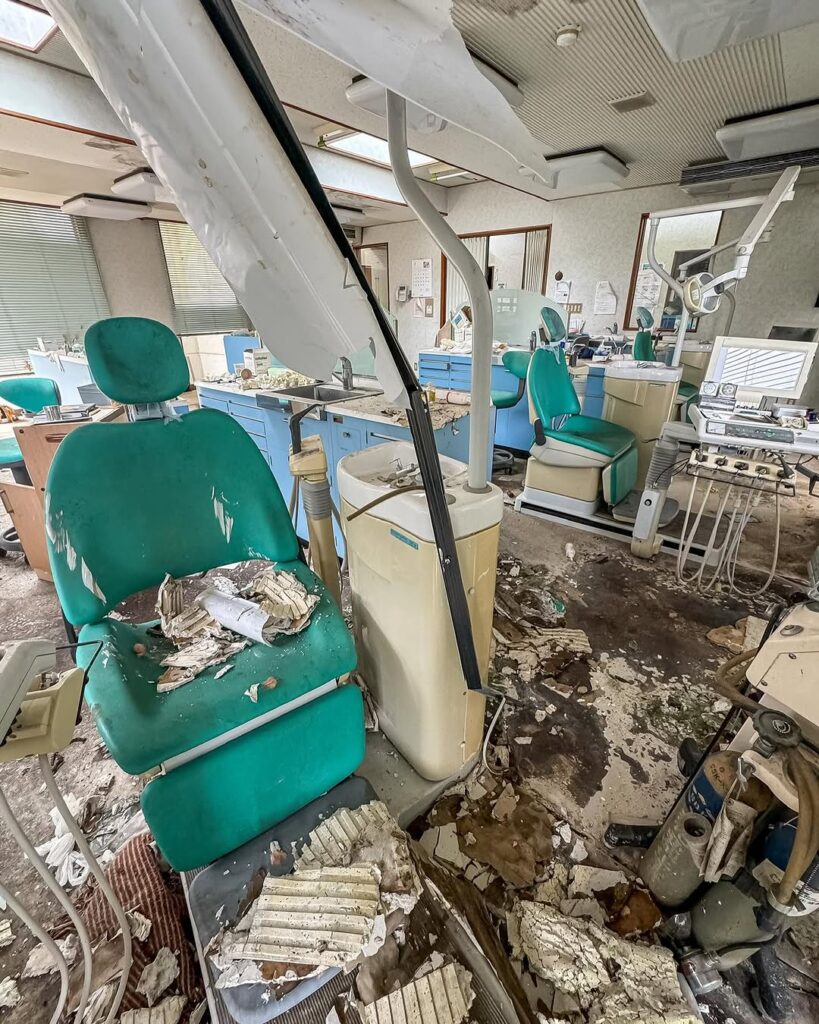
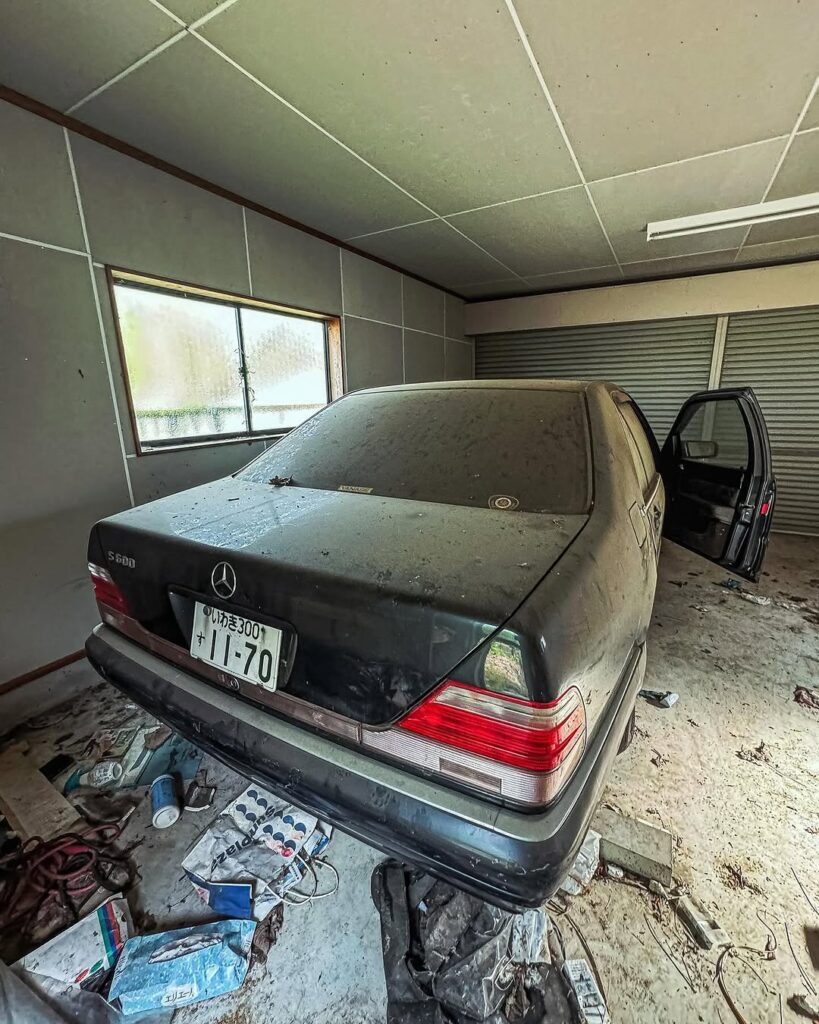

Future of Abandoned Healthcare Facilities
Trends in Healthcare Facility Abandonment
The abandonment of healthcare facilities, including dental offices, medical practices, and hospitals, has become an increasingly common phenomenon in American healthcare. Economic pressures, consolidation trends, and changing healthcare delivery models continue to contribute to facility closures and abandonment.
Understanding the factors that contribute to healthcare facility abandonment can help inform policy decisions and support systems designed to prevent unnecessary closures and ensure proper disposition of valuable healthcare resources when closures do occur.
Prevention and Mitigation Strategies
Developing strategies to prevent healthcare facility abandonment or ensure proper closure procedures can help preserve valuable healthcare resources and minimize community impacts. These strategies might include practice succession planning support, financial assistance programs, and equipment redistribution systems.
Community-based approaches to supporting struggling healthcare practices and facilitating proper closure procedures can help prevent the type of sudden abandonment that leaves valuable resources unused and communities without adequate healthcare access.
Conclusion: Lessons from the Abandoned Dental Office
The discovery of this abandoned dental office, frozen in time since March 2011 with all equipment, tools, patient records, extracted teeth, X-rays, and even a Mercedes vehicle left behind, provides profound insights into the challenges facing modern healthcare providers and the sudden nature of business failure. This remarkable find represents more than just an exciting urban exploration discovery—it serves as a case study in healthcare economics, practice management, and the human impact of professional failure.
The preservation of everything from sophisticated dental equipment to intimate patient records creates a comprehensive time capsule that documents both the technical aspects of dental practice and the personal relationships that define healthcare delivery. The abandoned Mercedes adds another layer of mystery and human interest to this discovery, symbolizing the professional aspirations and personal investments that were lost with the practice closure.
The excitement of discovering such a perfectly preserved professional environment reflects the universal fascination with spaces frozen in time and the stories they tell about interrupted lives and abandoned dreams. This dental office discovery provides valuable insights into dental practice operations, technology evolution, and the economic pressures facing healthcare providers in modern America.
The educational and historical value of this abandoned dental office extends beyond its immediate appeal to urban explorers. The facility serves as an unintentional museum of dental practice, preserving examples of 2011-era technology, patient care protocols, and business operations that provide valuable documentation of healthcare delivery during this period.
As urban explorers and researchers continue to discover and document abandoned healthcare facilities like this dental office, they contribute to our understanding of healthcare system challenges and the importance of supporting healthcare providers to prevent unnecessary closures. The story of this abandoned dental office serves as both a fascinating discovery and a cautionary tale about the fragility of small healthcare practices and the communities they serve.
The legacy of this abandoned dental office lies not just in its value as an exploration discovery, but in its representation of the thousands of healthcare providers who have struggled with the economic and personal challenges of maintaining professional practices in an increasingly complex healthcare environment. The preservation of this facility creates an opportunity to learn from the past while working to prevent similar abandonments in the future.
![]()

